The Complete Guide on How to Build Successful Sales Funnels
Are you feeling like you’re doing everything in your power to boost sales, but still, people aren’t converting?
Are you following every single principle of optimising your content, website and landing page to boost your conversions, but still, it just doesn’t seem to help?
Don’t worry.
The answer might lie in your sales funnel.
In fact, have you put great emphasis on developing and following your sales funnel when trying to increase your sales?
The problem with most businesses today is that they have a lot of eyes on them, but the vast majority of those people just aren’t buying.
Imagine if all, or at least the majority of people who come to your site and online shop converts.
I am going to let you in on a little secret:
It is possible!
But not in the way you might think.
Yes, things like website optimisation, increasing the size, and changing the color of your call-to-action is important, but what has an even greater impact on many conversions you have is your sales funnel.
In this complete guide on how to build a successful sales funnel, we’ll look at how we can develop a sales funnel that actually drive sales.
Let’s dig in!
Why do you need a sales funnel?
The most important reason to why you need a sales funnel is that you want your audience to convert.
Your fans mean nothing if they just come to your site and then bounce right off.
Let’s be honest.
As a brand, your end goal is always to sell.
But if you have a lot of people who could have been your customers, but for some reason isn’t converting, you’re missing out on tremendous opportunities.
The reason they aren’t converting?
I can’t speak for every single one of your followers, but for the majority, the reason they aren’t converting isn’t that your call-to-action is too small, or that your products don’t have a ”30% discount” sign on it.
It is because your sales funnel isn’t optimised, which means that the people who come to you aren’t ready to buy from you.
Remember:
People only buy from you when they trust you, your product, and the brand behind the product.
If they aren’t trusting you, your brand, or see how your product can help solve their pain points, they won’t buy from you.
The truth is that 73% of leads are not even ready to be sold to. That means you’re trying to shove your products down their throats before they’re ready to open their wallet.
And they aren’t because they don’t trust one or more of the three things mentioned above.
Sure, some might be able to be convinced with your sales talk, but the vast majority of people won’t, and the thing is, getting people who aren’t ready to buy from you to the bottom of your sales funnel is like having people that aren’t part of your target audience come to your site to buy.
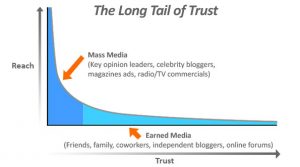
The odds are about equal that they buy, but the thing is, people who aren’t part of your target audience isn’t very likely to buy from you.
Why would they?
You aren’t solving any of their pain points.
The good news?
Companies that have realized the importance of selling to customers that have completed the journey through the sales funnel see a 450% increase in qualified prospects.
What’s more, if you take it one step further and build relationships with your prospects, you’ll drive 50% more sales at a 33% lower cost.
Sounds awesome, right?
To understand how we can leverage this, we need to understand what a sales funnel is and how we can use it.
A sales funnel, also known as conversion funnel, is the journey which your customer takes from coming to your website to buying from you.
All the people who come to your website are potential leads.
At least in the eyes of the marketers.
Because we cannot possibly know if a website visitor plans on buying or are just visiting your website to look something up.
The largest amount of people will just be website visitors and then leave, and this is why the funnel is largest at the top, representing a larger number of people.
But then, when they come to your site, people will drop off because of a variety of different reasons.
And those that make it to the very bottom of your conversion funnel will be very hot leads who are ready to buy from you, but that will only be a very small chunk of the total number of prospects you had at the beginning of your sales funnel.
Optimising your website is always great for improving your conversion rate because that prevents certain people to drop off for various reasons, such as a website error, slow loading time, your ad doesn’t align with your landing page, and so on.
As you can see, your sales funnel isn’t leak proof.
But by identifying the holes in your funnel where potential leads are escaping through, you can solve the issues that are causing these drop-offs, and instead convert those people to customers.
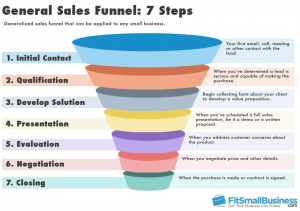
Not all sales funnels look the same, but they all have one thing in common:
They have the ”initial contact” and then the closing/conversion at the bottom of the funnel.
Remember that the sales funnel, very similar to this one has existed for a long time, which is the reason that it might be time to update it to make it more up-to-date.
Because the truth is, it isn’t up-to-date.
When you’ve closed a prospect and they’ve bought from you, do you just leave them hanging?
According to the traditional sales funnel, it sure looks like you do.
The problem?
It’s a huge mistake.
Too many brands stop their customer interactions at the second they’ve checked out, without realizing that it is the existing customers are the most valuable.
Because on average, loyal customers are worth up to 10 times as much as their first purchase.
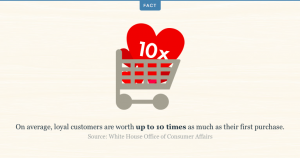
To take advantage of that, you need to proceed the interactions and be in touch with your customers on a regular basis and not stop talking to them at the second they buy from you.
WHat’s more, as the traditional sales funnel represented, the probability of selling to a new prospect is very now.
In fact, 5-20% to be more precise.
The probability of selling to an existing customer, is as you can imagine, a lot higher. In fact, the probability of selling to an existing customer is 60-70%
This is why the modern sales funnel which knowledges that there should be a part after checkout looks like this:
The good news?
The majority of your customers are still developing sales funnel according to the traditional model, while you’ll now have the leverage of creating sales funnel that actually meet today’s market.
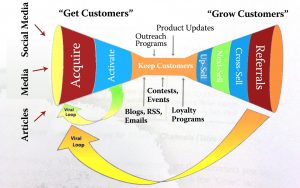
Now, the goal of the conversion funnel isn’t solely to just attract and convert prospects into customers, but now, it’s equally much about retaining, improving relationships, and making your existing customers more loyal.
And considering the statistics that proved the importance of existing customers, it’s actually no dumb idea.
My favourite part about this is that at the end of the funnel is referrals, which is what you get when your existing customers fall in love with you after you’ve treated them like kings and queens, even after they’ve bought from you – compared to most of your competitors that treat their customers like air at the moment they convert.
You might recognize that mindset because I sure do.
People might say ”ignore that customer, they’ve bought from us anyways”.
Or ”they’ve already converted so let’s not waste any energy on them”.
But what they’re forgetting is that that customer can be worth 60-70 percent more than its first purchase.
And by treating them poorly will make them worth minus x percent of their first purchase, because they won’t buy from you ever again, and they might also tell their friends about your terrible customer service.
The natural reflect that most brands have when they are seeing that their customers aren’t converting is that they attract more customers.
With all of the things we just talked about in mind, you’ll see how this is a bad idea.
The funnel has a ton of wholes where prospects are leaking and bouncing off your site, and identifying those holes and fixing them is far more valuable than just attracting more customers with the help of marketing.
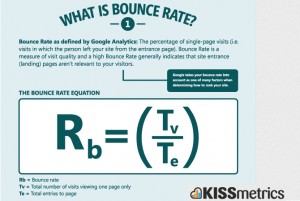
Because if you do, you won’t get the best results for your money. People will bounce off your site.
Therefore, it’s far more important to focus on your conversion funnel, and the journey that your prospects go through, rather than trying to compensate the fact that your sales funnel is leaking by attracting more prospects.
Let’s look at ways you can create sales funnel that actually sell.
And create conversion funnels that actually convert.
1. Conduct customer research (and attract customers)
There are two parts to this.
The first step of the sales funnel is awareness.
In order to get people to enter your sales funnel, they first need to be aware of your brand.
There’s no going around that, and it is something I think we can all agree on.
But the thing is, you don’t want to create your funnel as wide as possible at the top.
Because what will happen is that a ton of people will drop off after just a few minutes because they just aren’t relevant to your brand.
They’re not part of your target audience.
Excuse my quick sketch, but your sales funnel would look something like this if you try to force every single person you come across down your sales funnel:
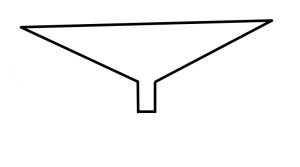
Sure, on the surface, it might look like you’re winning, because you’re getting all these potential leads.
But when you look closer, you realize that just a tiny fraction of the people who are coming to your site are actually interested in your business, and are converting.
And the truth is, you’ll be far better off focusing on people who actually are relevant to your business and attracting them to you because naturally, you’ll have a higher conversion rate.
To do this, you first need to research your target audience and learn more about them.
The better you get to know them, the better you’ll be able to not only appeal to them but also spend your marketing money better and generate more qualified leads to your funnel for the same amount of money by picking away the people who aren’t relevant to you.
To get to know your target audience better, ask these questions:
- Who are they?
- What are their passions?
- Where are they spending time online?
- What are their pain points?
The better you know your customers, the better you’ll be able to tailor your message to spark their interest, but also optimize your site for conversions.
It’s impossible to have a successful sales funnel if all your leads are people who couldn’t care less about your business because if that’s the case, they’ll bounce off your site in a heartbeat.
What’s more, realize that not all your leads are in the same parts of the conversion funnel. This is why you need to present how your product helps people from different angles, as well as craft messages that increase the trust in:
- you
- your product
- The brand behind the product
Because if the customer doesn’t trust those things, they won’t buy from you.
2. Develop customer personas
Knowing your customers is key to a successful sales funnel, and this is why you want to take it one step further and develop customer personas.
Customer personas are fictional characters that are supposed to resemble your regular customer, that are carrying the characteristics of your normal customers.
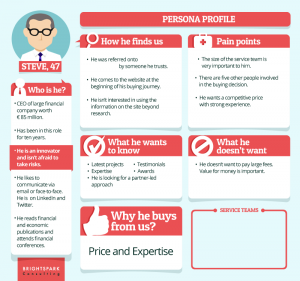
Customer research is just scratching the surface when it comes to getting to know your customers, but when you develop customer personas, you know everything about them, and as a result, you’ll be able to craft messages that resonate with them and ultimately attracts them to your site, making them convert.
If you don’t know what drives your prospects, it’s impossible to present your value proposition.
It will be like aiming in the blind.
Luck will be your deciding factor.
But we don’t want to be relying on luck.
We want higher conversion rates and a lower cost per conversion, and that is exactly what you get by learning everything you can about your customers and then creating a landing page that offers solutions to all of their problems.
…If they just convert, of course.
The most important part about this is that when you know the personalities of your target audience, you’ll be able to use a tone in your messaging that makes your prospects resonate with you.
And when you get them to resonate with you, they’ll trust both you and your brand.
Then, you only have to convince them about your product, and that is what your value proposition is supposed to do.
3. Have clear call to action (and present your value propositions)
If you want your customers to do something for you, just tell them!
When your leads come to your landing page, they’ll be a little confused.
They have just come to a completely new site, and within seconds, you need to convince them to continue the journey down your conversion funnel.
This is exactly what your call to action will help you do.
The problem with this, however, is that far too many guess what their customers want, rather than asking and listening.
I am sure your product has several benefits and helps your customer in a variety of different ways.
But you want to focus on the problems that your prospects are experiencing the most.
Instead of guessing what problems your prospects might have, take the time to actually listen, and then act accordingly.
Just having any call to action, or any value proposition just won’t do the job.
You need to have a value proposition that solves the problems your target audience is facing.
If your call to action and value proposition isn’t relevant to your prospects, there’s a risk act you’ll disconnect yourself from them.
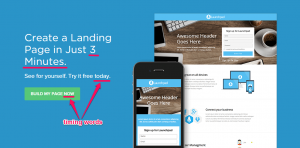
This is why it’s so important to first identify your target audience and then take the time to actually listen to them.
But that’s not all.
Understand that all of your leads aren’t in the same part of your sales funnel, which means that your value propositions and calls to action can’t be all the same.
It’s not about what you think will resonate with your audience, but more so, where they are in the sales funnel, and what your customers want right at this moment, as well as when they’ve moved further down the funnel.
Because
most of the times, their needs change as they move down the funnel.
When your prospects first land on your site, everything will be new, and they’ll trust no-one.
This is why, the first step is to get them to trust you, your brand, and ultimately your product.
If they don’t, there’s a risk they’ll bounce off your site.
This is why landing pages with a video or article are great for landing pages.
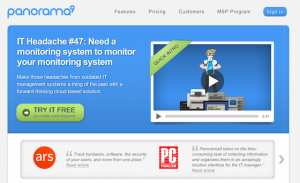
This way, you can show your expertise, getting them to trust you, as well as mentioning your business and how many people it has helped, making them trust your business.
When doing this, and your prospects first land on your landing page, you want to make it clear that they’ve come to the right place.
Far too often, brands create a landing page and an advertisement that is supposed to drive prospects to the landing page.
The only problem is that what the ad promises is completely different from what the landing page gives, creating a disconnect between the landing page and ad – greatly increasing the risk of them bouncing off your site.
When your prospects come to your landing page, you need to tell (and show) that they’ve come to the right place for what it is they need help with.
This is why an introduction where you talk about the problem and mention that they’ve come right if they need with the problem.
That way, they won’t bounce off your site in the belief that your page won’t help them solve their problem, fixing your holes located far up in your sales funnel.
The most important part is that you make it clear how your site will benefit the visitor, and why it is worth their time.
Once you’ve reeled them in, got them to trust you, and your brand, it is time to tell them about your amazing offer.
Just getting prospects to this stage means they clearly have an interest in the topic your brand is passionate about, which all means they are qualified leads.
It’s not solely about presenting the benefits of your product, but it is also about bringing your prospects value before they convert.
And for a brand, that might be to solve a problem that your customer might have.
When you provide your audience with value, you have the leverage.
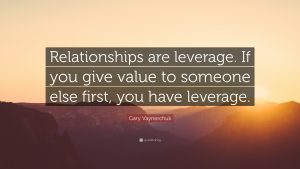
It’s just about offering something that is relevant enough, solves your customer’s problem, and brings them a ton of value.
Now, we’re getting closer to the end of the conversion funnel, at least when it comes to getting them to converts and this brings me to my next point.
4. Time for the conversion
You’ve now successfully attracted hot leads to your site, you’ve convinced them about your brand’s and your own expertise in the industry you’re in.
You’ve presented the irresistible offer to the person that clearly has an interest in what it is you are offering since they’ve stayed this long.
At this stage of the sales funnel, it is easy to become too eager and just try to shove your products down your prospect’s throat, but obviously, that’s not the right approach.
If you have brought your prospects enough value with your article, video, etc., then your prospects will buy from you – under the condition that the thing you are selling actually brings them value.
If they don’t convert, it is because of one main reason:
You haven’t presented its benefits well enough.
If they’ve taken themselves all the way down the sales funnel, they’re clearly very hot leads, and they are clearly interested in what it is your business is offering, and the industry it is operating in.
Now, you might be thinking ”but Jens, they might not convert because they think my product is too expensive”.
And sure, that might be the case, but if they aren’t buying your product, due to its price, it is because you haven’t presented the value t brings well enough.
Everything you buy solves a problem, and therefore brings value to the customer that has that problem.
And if you are secure in your product, and know that it is solving a big enough problem that is worth the X amount of dollars you’re charging, the reason they aren’t converting is that you aren’t presenting how your product brings value well enough.
5. After the conversion
Okay, so you’ve finally made a conversion, and lead your prospect all the way from the top of your funnel past the conversion state.
According to the traditional sales funnel, you’d now just kick your feet up and enjoy a glass of wine.
You’ve made your conversion, time to celebrate!
Right?
Wrong.
When you’ve made the conversion, the fun part begins.
Now, it is time to strengthen your relationship with them, increase their trust in you, and most importantly, get them to refer your business.
All of these things ensure that your customer stays with your brand, and becomes returning customers.
By now, you know the immense value of returning customers, so it would be foolish to just let your customers run away from you when you’ve finally converted them.
Looking at the modern sales funnel, you can see that the last stage is referrals.
If you want your customers who have already gone through your sales funnel to fill your funnel with very hot prospects for you, you need to create a referral program.
You’re probably familiar with referral programs before because many of the top brands are having them.
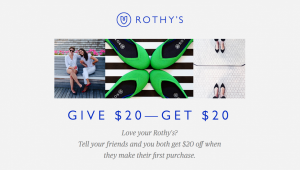
The reason?
They work, and they’re extremely effective.
After all, 92% of people trust peer recommendations, and by leveraging referral programs, you get your audience to do your marketing for you!
In order to create a sales funnel where your existing customers fill it with prospects, you need to ensure that you bring value to both the person who refers a customer to you, the person who gets referred, as well as yourself.
For some brands, doing this might mean that you won’t be making a lot of profit, but remember that returning customers are worth 60-70% more than first-time customers.
When you’ve converted someone, present them with the possibility to refer a friend, and clearly state the benefit of doing so.
Obviously, the better the incentive is, the higher the chance that they’ll refer someone.
What’s more, you also want to offer better rewards the more people you refer.
That way, you’ll make your existing customers even more loyal, and they’ll become advocates of your brand who not only draw in customers through referrals but also goes out and tell everyone how awesome you are, thus also driving your customers that way, as well as increase brand awareness.
Conclusion
The sales funnel is an important part of all successful businesses’ sales strategy.
The truth is, whether you’ve developed your sales funnel or not, you have one.
But just because you have one doesn’t mean it is beautiful.
In fact, it might be full of holes and make you lose a ton of prospects that could have been converted into customers if dealt with in the right way.
By defining your sales funnel, making it your sales strategy, and then identifying any problems it may have that is making your prospects bounce off your site, you can greatly increase your sales, as well as save money.
There are two ways you can increase sales:
Get more prospects, or optimize your sales funnel so the prospects you have actually converted.
Guess which of those is the best tactic.


